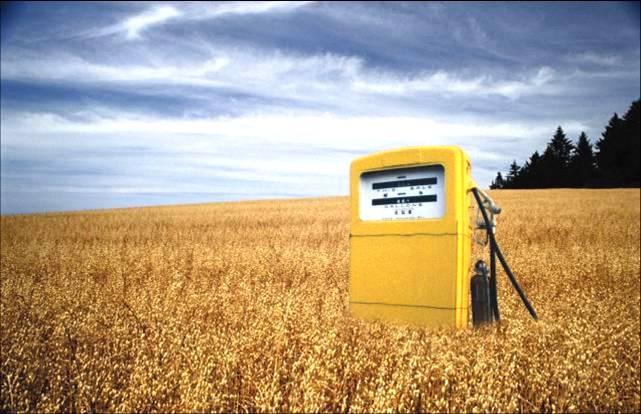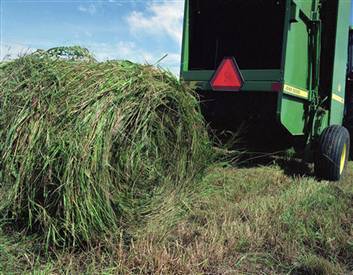After disaster, traditional gasoline and diesel fuel will likely be scarce for a few days, or it may be months, years, or forever, depending upon the circumstances.
If you’ve prepared your vehicle and educated yourself regarding biofuel production, you won’t have to worry about fuel in a survival situation.
Today we’ll discuss 5 top biofuel crops for survival that you can grow and convert into fuel on your own.
Before we get started, you need to know that in order to run your bug-out vehicle on biofuels, you will most likely need to convert the motors to make them compatible with your choice of fuel. This can be expensive if you pay to have it done, but fairly affordable if you do it yourself.
Either way, the cost will quickly be recouped when you don’t have to buy gasoline or diesel anymore.
There are two different types of motors and thus two different types of fuel. The spark motor runs on unleaded ethanol fuels. The diesel, or compression motor, runs on refined oil-based fuels. This is the motor that’s used when discussing cars that run on vegetable oils.
To make biofuel from any of these products, you’re going to need some type of natural oil, methanol, and lye. You’ll also need the proper equipment to make it so study up on it. You can make your own methanol, but that’s a different topic altogether!
Soybeans
The reason that we’re listing soybeans as the first biofuel crop to grow in a survival situation is because you can actually use the pressing process to extract an edible form of highly-nutritious protein. That’s right – while making fuel, you’re also making a highly desirable survival product, as well.
One of the biggest problems with growing crops for biofuel in a survival situation is that you’re going to need the land to grow food. That’s the obvious priority; you’re not going to need fuel if you starve to death.
Soybeans yield about 48 gallons of oil per acre though there is some new technology coming out that involves double pressing that may double the yield.
Algae
Yep, algae. There are a couple of reasons why algae is a good crop to grow for biofuel in a survivalist situation.
First, you don’t have to use land that’s good for growing food so your fuel crop isn’t competing with your food crops. You can use ponds, swampland, or set up your own tanks and grow it wherever you’d like.
Algae is also fairly easy to grow and process compared to seed crops and the actual process of growing it makes CO2, a component of methanol that you’ll need to produce in order to make your own biofuel for survival.
The final bonus? Algae yields 10,000 gallons of oil per acre if grown in an open pond! That’s a lot of oil from land that you wouldn’t be using from anything else!
Corn
We were a bit hesitant to include corn in this list because we don’t want to include direct food products that would require fuel to be made from food supplies.
But new research has found a way to use the stalks and leaves of the corn plant instead of the kernel to produce biofuel. This research also includes using other forms of biomass, or waste products such as wood chips, to use to make biofuel.
If using corn kernels, you only get about 18 gallons of oil per acre; another reason we were hesitant to include corn on the list. But if you’re growing it for food and using the leaves and stalks to make biofuel instead, then you’re growing a dual-purpose crop and eliminating waste, too.
Switchgrass 
Switchgrass is the wave of the future in biofuel if you ask some researchers.
It can be grown on marginal land that you probably won’t use for farming so you’re not using crop space to grow fuel products. It can grow in a variety of soils and is a perennial, so you only have to plant it once. It will regrow during warm weather for 10-20 years.It grows best in well-drained soil with a pH of 5.0 and higher of medium fertility.
Switchgrass is a great crop for biofuel in a survivalist scenario because it has a high cellulosic content and yields about 500 gallons of ethanol per acre.
Sunflowers
Even though this is a food source, we’re going to include it because it yields a significant amount of oil per acre. Since the plant waste that is left over can also be turned into fuel pellets that can be used to fuel electric generators, sunflowers make our list of biofuel crops for survival in a SHTF situation.
Per acre, you can expect to yield 500 gallons of convertible oil, plus the biomass that’s left over after pressing the seeds.
Other crops that can be used to make biofuel include wheat, cottonseed, rapeseed (canola), palm oil, sugarcane and a variety of nut trees. Basically, if it produces an oil, it can be converted to biofuel, though yields vary drastically from one type to another.
Ideally, in a survival situation, you want to use a product that isn’t going to take up agricultural space that can be used for food, unless of course you have unlimited space!
This article has been written by Theresa Crouse for Survivopedia.














































































I’m a bit surprised that Hemp didn’t make the list since it is so prolific, requires no fertilizer and will grow virtually anywhere weeds can grow. Hemp oil was one of the fuels early automobiles were designed to use as well; even a steam engine can run on hemp oil.
When you discuss “competing with food production” you need to factor in that the by-product of producing bio-fuels from a distillation process is typically a distiller grain soluble (DGS) which in and of itself is a valuable and sought after feed for cattle. So don’t fret about using corn. The DGS can be used to feed cattle (which the corn likely would have done in the first place). And since the sugars have been removed, it’s actually better for the cattle as DGS.
Bio fuels in small engines like motorcycles, lawn mowers boat motors etc. can ruin the motor in short order. When all else fails get a horse or mule or donkey.
I don’t agree with Sammy 44. I’ve flown model airplanes using two stroke engines which burn 80% ethanol, 5% nitromethane and 20% castor oil, which happens to be the best natural lubricant, without any problem. There should be no problem using ethanol in larger two stroke engines.
One big problem about biofuels is no one address that I’ve seen does anything about lubricating oil for your engine. No lubricating oil, no run. No matter how much fuel you have.
Good point!
love the hemp oil idea thank you
You know, I love the idea of Green boating! I’ve rnetcely found out about the algae farms that are able to make bio diesel out of algae in about three days! Yes that’s 3 days! I can’t wait to find a fuel dock in Chicago that can fill my tanks with that! I just may go down and lay on my swim platform and try to inhale some of that sweet bio exhaust! Hey, just wondering if you’d link to my website. You can join my site and write there too. Keep up the green boating!